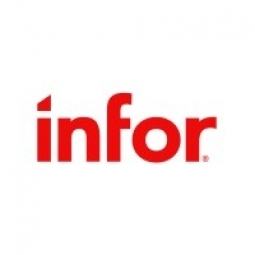公司规模
Large Corporate
地区
- America
国家
- United States
产品
- Birst Business Analytics
技术栈
- Business Intelligence (BI)
- Data Analytics
实施规模
- Enterprise-wide Deployment
影响指标
- Productivity Improvements
- Cost Savings
- Customer Satisfaction
技术
- 分析与建模 - 大数据分析
- 分析与建模 - 实时分析
适用功能
- 离散制造
- 销售与市场营销
用例
- 预测性维护
- 库存管理
服务
- 数据科学服务
关于客户
True Textiles 是全球领先的专有和开放式商用纺织品制造商。该公司提供广泛的纺织产品和增值服务,有助于提高办公室、医院、礼堂、酒店、竞技场等各种空间的美观、舒适和性能。True Textiles 的业务范围从生产自己的纱线到分销自己的面料,创造了一种垂直结构,这是该组织一些最大胆的可持续发展计划的关键——包括推出世界上第一款生物基面板面料。True Textiles 在美国拥有多家制造工厂,并采用平衡经济、环境和社会公平问题的三重底线方法,提供面板面料、室内装饰、墙面覆盖物、隔间窗帘等。
挑战
True Textiles 是一家领先的商用纺织品制造商,近十年来一直在使用传统的内部部署商业智能 (BI) 解决方案。虽然该解决方案有助于整合公司分散的数据源,但使用起来很困难,功能有限。其昂贵的许可模式使得部署扩展成本过高,因此一小部分管理和 IT 用户为组织的其他部门运行报告。随着更多问题的出现,报告需要修改并重新运行,这是一个耗时、繁琐的过程,降低了员工的工作效率并减缓了决策。随着他们的期望发生变化,他们开始寻找一种易于使用的自助服务解决方案,使他们能够快速访问高级功能。他们需要一种可以扩展到销售部门以外的解决方案,以帮助他们以经济高效的方式提高整个组织的绩效。
解决方案
在评估了 BI 市场后,True Textiles 认为,如果不借助其他昂贵的报告解决方案,数据发现工具和其他分析解决方案就无法与 Birst 像素完美报告的质量相媲美。Birst 以最低的成本提供了最广泛、最完整的功能。Birst 的经济实惠使他们能够在需要的地方部署 Birst,以便他们的用户可以立即获得业务洞察,从而做出更明智、更快速的决策。Birst 还提供了自动向公司销售人员分发定期报告的功能。他们使用 Birst 不仅可以自动向员工主动推送定期报告,还可以提供自助式交互式仪表板,使用户能够在需要时准确找到所需的信息。
运营影响

Case Study missing?
Start adding your own!
Register with your work email and create a new case study profile for your business.
相关案例.

Case Study
Remote Monitoring & Predictive Maintenance App for a Solar Energy System
The maintenance & tracking of various modules was an overhead for the customer due to the huge labor costs involved. Being an advanced solar solutions provider, they wanted to ensure early detection of issues and provide the best-in-class customer experience. Hence they wanted to automate the whole process.

Case Study
Predictive Maintenance for Industrial Chillers
For global leaders in the industrial chiller manufacturing, reliability of the entire production process is of the utmost importance. Chillers are refrigeration systems that produce ice water to provide cooling for a process or industrial application. One of those leaders sought a way to respond to asset performance issues, even before they occur. The intelligence to guarantee maximum reliability of cooling devices is embedded (pre-alarming). A pre-alarming phase means that the cooling device still works, but symptoms may appear, telling manufacturers that a failure is likely to occur in the near future. Chillers who are not internet connected at that moment, provide little insight in this pre-alarming phase.

Case Study
Aircraft Predictive Maintenance and Workflow Optimization
First, aircraft manufacturer have trouble monitoring the health of aircraft systems with health prognostics and deliver predictive maintenance insights. Second, aircraft manufacturer wants a solution that can provide an in-context advisory and align job assignments to match technician experience and expertise.

Case Study
Integral Plant Maintenance
Mercedes-Benz and his partner GAZ chose Siemens to be its maintenance partner at a new engine plant in Yaroslavl, Russia. The new plant offers a capacity to manufacture diesel engines for the Russian market, for locally produced Sprinter Classic. In addition to engines for the local market, the Yaroslavl plant will also produce spare parts. Mercedes-Benz Russia and his partner needed a service partner in order to ensure the operation of these lines in a maintenance partnership arrangement. The challenges included coordinating the entire maintenance management operation, in particular inspections, corrective and predictive maintenance activities, and the optimizing spare parts management. Siemens developed a customized maintenance solution that includes all electronic and mechanical maintenance activities (Integral Plant Maintenance).

Case Study
Hospital Inventory Management
The hospital supply chain team is responsible for ensuring that the right medical supplies are readily available to clinicians when and where needed, and to do so in the most efficient manner possible. However, many of the systems and processes in use at the cancer center for supply chain management were not best suited to support these goals. Barcoding technology, a commonly used method for inventory management of medical supplies, is labor intensive, time consuming, does not provide real-time visibility into inventory levels and can be prone to error. Consequently, the lack of accurate and real-time visibility into inventory levels across multiple supply rooms in multiple hospital facilities creates additional inefficiency in the system causing over-ordering, hoarding, and wasted supplies. Other sources of waste and cost were also identified as candidates for improvement. Existing systems and processes did not provide adequate security for high-cost inventory within the hospital, which was another driver of cost. A lack of visibility into expiration dates for supplies resulted in supplies being wasted due to past expiry dates. Storage of supplies was also a key consideration given the location of the cancer center’s facilities in a dense urban setting, where space is always at a premium. In order to address the challenges outlined above, the hospital sought a solution that would provide real-time inventory information with high levels of accuracy, reduce the level of manual effort required and enable data driven decision making to ensure that the right supplies were readily available to clinicians in the right location at the right time.








